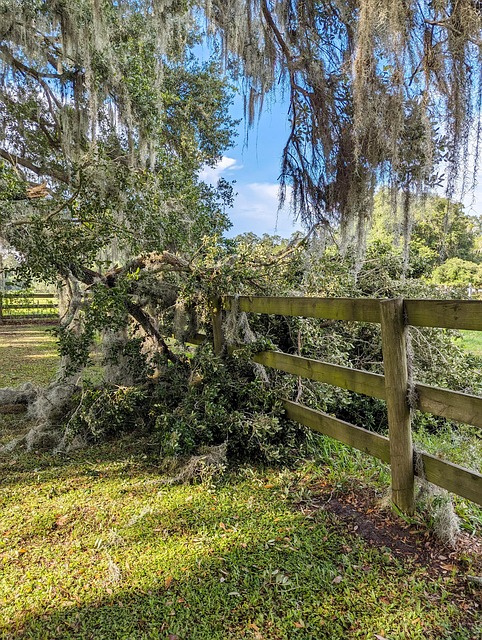Introduction:
Maintaining an appealing and durable wooden fence is easier with proper staining and sealing techniques. This comprehensive guide explores the art of enhancing your outdoor space through fence staining and sealing, offering both aesthetic and protective benefits. From understanding the various types of stains to mastering application techniques, we’ll equip you with the knowledge to transform your wooden fence into a striking feature that stands the test of time.
- Understanding Fence Staining: Benefits and Types
- Preparing Your Wooden Fence for Staining and Sealing
- Choosing the Right Stain and Sealer for Optimal Protection
- Application Techniques to Ensure Long-Lasting Results
Understanding Fence Staining: Benefits and Types
Fence staining is an essential process for maintaining the beauty and durability of wooden fences. By applying a protective coat of stain, you not only enhance the aesthetic appeal but also shield the wood from the elements. The benefits are twofold: first, it prevents fading and discoloration caused by sun exposure, rain, and snow; second, it repels dirt, mold, and mildew, keeping your fence looking clean and fresh.
There are various types of fence stains available in the market, each with unique characteristics. Water-based stains are eco-friendly and easy to apply but may require more frequent reapplication. Oil-based stains offer superior protection against moisture and UV rays, ensuring longer-lasting results. Solid color stains provide a uniform look, while transparent or semi-transparent options allow the natural grain of the wood to show through, adding depth and character to your fence.
Preparing Your Wooden Fence for Staining and Sealing
Before applying stain or sealer, it’s crucial to prepare your wooden fence thoroughly. Start by sweeping or brushing away any loose dirt, debris, or dust from the fence’s surface. This ensures that the finish will adhere properly and last longer. Next, check for any signs of rot, decay, or damaged boards and repair these issues before proceeding. Sanding the fence lightly can also help to roughen the surface slightly, allowing for better stain absorption.
Additionally, washing the fence with a mild detergent and water solution removes built-up grime and oils that might prevent the stain from bonding correctly. After washing, ensure the fence is completely dry before staining or sealing. Proper preparation will not only enhance the aesthetics of your wooden fence but also extend the life of your new stain or sealer.
Choosing the Right Stain and Sealer for Optimal Protection
When it comes to fence staining and sealing, selecting the appropriate products is key to achieving long-lasting protection for your wooden fence. The market offers a wide array of options, each designed for specific wood types and desired finishes. Understanding the unique needs of your fence is essential. For instance, a deck or a shade-loving fence might require a stain that blocks UV rays, while a fence exposed to harsh weather conditions necessitates a sealant that can withstand moisture and fading.
Opting for high-quality stains and sealers from reputable manufacturers ensures better adhesion, durability, and resistance to elements. Reading product descriptions and checking customer reviews can guide your choice, helping you make an informed decision. Remember, the right combination of stain and sealer will not only enhance the aesthetics of your fence but also safeguard it against decay, cracking, and fading for years to come.
Application Techniques to Ensure Long-Lasting Results
When it comes to fence staining and sealing, proper application techniques are key to achieving long-lasting results. Begin by thoroughly cleaning the wooden fence to remove any dirt, grease, or existing stains. This step ensures that the new finish adheres smoothly. Use a pressure washer or a mild detergent and a brush to ensure the surface is free from contaminants.
Next, sand the wood gently to create a rough texture that allows the stain to penetrate deeper. After sanding, wipe down the fence again to get rid of any dust or debris. Now, apply an even coat of high-quality fence stain using a roller or a brush. Ensure you cover all areas evenly, paying close attention to corners and crevices. Allow the stain to dry completely before applying a protective sealant to shield the wood from the elements.
